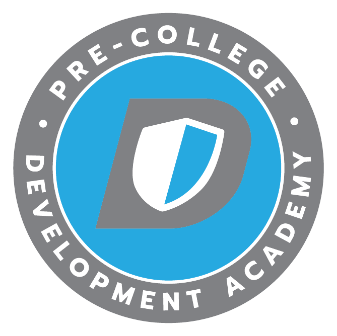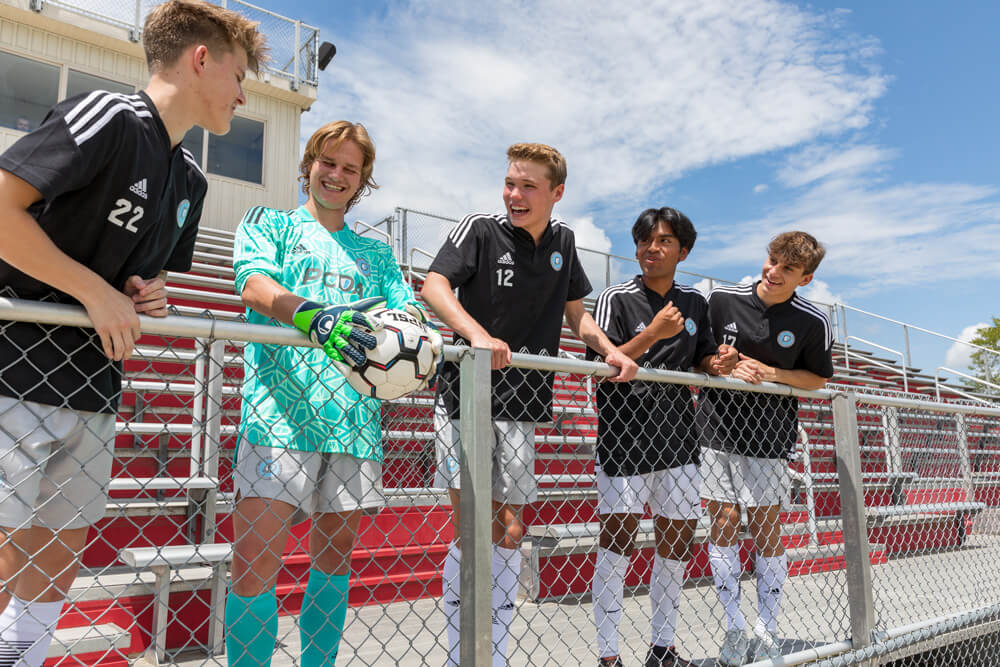PCDA stands for Pre-College Development Academy. It’s a post-high school, residential soccer academy in the United States designed to:
- Bridge the gap between high school and college soccer: They offer intensive training and competition at a college-like level, preparing athletes for the jump in demands and expectations.
- Maximize playing time and eligibility: Athletes gain experience and improve their skills, potentially increasing their chances of securing starting positions and utilizing their full four years of college eligibility.
- Combine college academics with soccer development: PCDA provides a structured environment where athletes manage both rigorous training and studies, ensuring academic success and NCAA eligibility.
- Provide an alternative path to college success: For talented athletes who haven’t yet secured college offers, PCDA offers continued development and exposure to broader recruiting networks.
Here are some key features of PCDA:
- High-level training: Experienced coaches provide individualized training plans and access to top-notch facilities.
- Competitive leagues and tournaments: Athletes play against talented competition, including college teams, to gain valuable experience.
- Academic support: Dedicated staff assist athletes with academics and ensure they meet NCAA eligibility requirements.
- Holistic development: PCDA focuses on athletes’ personal growth, leadership, and mental toughness, preparing them for success on and off the field.
The need for PCDA (Pre-College Development Academy) arises from several challenges faced by aspiring collegiate athletes, particularly in soccer:
Bridging the Gap Between High School and College:
- Direct jump from high school soccer to college level can be substantial: The pace, competition, and physical demands increase significantly, potentially leading to playing time struggles or even disappointment. PCDA provides an intermediate step with high-level training and competition to bridge this gap and prepare athletes for success in college.
Maximizing Playing Time and Eligibility:
- College rosters are limited: Freshman players may initially struggle to secure consistent playing time. PCDA allows athletes to develop and refine their skills, potentially increasing their chances of earning starting positions and maximizing their four years of eligibility.
Academic-Athletic Balance:
- Balancing competitive training with academic requirements can be demanding: PCDA’s structured environment helps athletes manage both academics and soccer effectively, ensuring they graduate on time and maintain NCAA eligibility.
Alternative Path to College Success:
- Not all high school athletes receive college offers: PCDA offers a structured program for talented athletes who may not have secured immediate college enrollment but still harbor collegiate aspirations. It provides them with further development and showcases their capabilities to broader recruiting networks.
Beyond Soccer:
- Holistic development: PCDA focuses not just on athletic skills but also on personal growth, leadership, and mental toughness, preparing athletes for success both on and off the field.
In conclusion, PCDA fills a need by providing a bridge between high school and college soccer, offering additional development opportunities, maximizing playing time potential, and ensuring academic success, ultimately equipping athletes for a more promising collegiate career.
To be eligible for PCDA, applicants should generally meet the following criteria:
Academic:
- Graduating high school senior or college transfer.
- Demonstrated commitment to academics and ability to balance them with a demanding training and playing schedule.
- Meeting NCAA/NAIA eligibility requirements: This includes core course completion according to NCAA guidelines.
Athletic:
- Talented soccer player with the potential to play at the college level.
- Experience playing competitive soccer (club, high school, etc.).
- Dedication and passion for the sport with a strong work ethic and desire to improve.
Age:
- Applicants are typically 18-19 years old at the start of the program. However, we have admitted high school seniors with extenuating circumstances.
Additional factors:
- PCDA also considers leadership qualities, personal character, and maturity when evaluating applicants.
- Financial need may be considered in some cases, as PCDA strives to make the program accessible to talented athletes from diverse backgrounds.
No, PCDA is not technically a gap year program. While it shares some similarities with gap years, there are crucial differences:
Traditional Gap Year:
- Purpose: Primarily taken for personal growth, travel, volunteering, or exploring career options.
- Structure: Often unstructured, with individuals planning their own activities and experiences.
- Academics: Typically does not involve formal academic coursework.
- College application: May impact college admission chances depending on how the gap year is spent.
PCDA:
- Purpose: Focused on bridging the gap between high school and college soccer, maximizing playing time potential, and ensuring academic success.
- Structure: Highly structured with rigorous training, competition, and academic support.
- Academics: Includes college-level coursework and maintains NCAA eligibility requirements.
- College application: Considered “post-high school” education within NCAA regulations, not negatively impacting college applications.
Essentially, PCDA combines elements of a gap year with the structure and academic focus of a pre-college program. It allows athletes to further develop their skills, gain valuable experience, and prepare for collegiate success without disrupting their academic progression.
Here’s a table summarizing the key differences:
| Feature | Traditional Gap Year | PCDA |
|---|---|---|
| Purpose | Personal growth, exploration | Athletic and academic development |
| Structure | Unstructured | Highly structured |
| Academics | No formal coursework | College-level coursework, NCAA eligibility maintained |
| Impact on college applications | Varies depending on activities | No negative impact, considered “post-high school” education |
Therefore, while PCDA may fill some of the functions of a gap year, its primary focus and benefits are squarely aimed at preparing athletes for a successful college soccer career.
A student athlete could leave PCDA as an academic junior with half of their bachelor’s degree completed, but as an athletic freshman with 4 years left to play. This provides high school graduates with six years of post-high school soccer, compared to the traditional four. Your goal as a prospective PCDA athlete is to improve upon your current soccer offers or develop you into a much more recruitable athlete.
If you believe that you will be an impactful player and the college is the right fit for you academically, socially, and financially, then take the offer. However, if you are offered a roster spot and likely to be on their JV team, you should consider PCDA for a year to enhance that offer.
PCDA is a 10-month program that follows the academic calendar. We participate in a semi-professional league and arrange multiple matches against college teams, MLS academies, ECNL, and youth teams. Our student athletes stay with us for 1-2 years.
We will participate in a minimum of 40 competitive matches, including a semi-professional league. In contrast, a traditional college season typically lasts for approximately 3 months, with the possibility of a redshirt year.
A redshirt year refers to a year in which a student-athlete does not compete in official athletic competitions but remains enrolled as a full-time student at their college or university. This status allows the athlete an additional year of eligibility to compete in their sport, extending their collegiate career. Redshirting can be voluntary, where the athlete and coaching staff agree to use the year for additional development or recovery, or it can be involuntary due to various circumstances such as injury or academic eligibility. During a redshirt year, the athlete may still train with the team, participate in practices, and receive coaching, but they are not eligible to compete in official games or matches
We carry 18 players per roster to maximize game time.
Immediately going to college right after high school and competing for significant playing time is a challenging task for any player, regardless of their level of youth soccer experience. At PCDA, our athletes are guaranteed to train and play over a period of 10 months while also taking college classes.
While the cost of a full year at PCDA can range from $0 to $25,000, it’s important to compare this to the overall cost of attending a 4-year public university in the USA. Tuition alone varies significantly depending on in-state or out-of-state status, averaging $10,560 for in-state and $27,020 for out-of-state students per year. Those college fees typically do not include room and board, text books, etc.
Please utilize the ‘Schedule Video Call’ link on our website, www.PreCollegeDA.com, before submitting an official application. This will allow us to have a conversation about PCDA and discuss your expectations.


